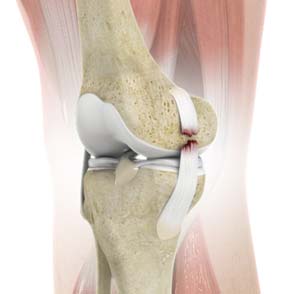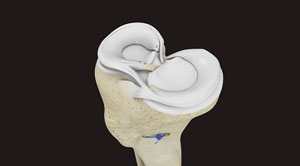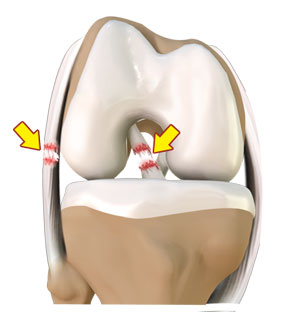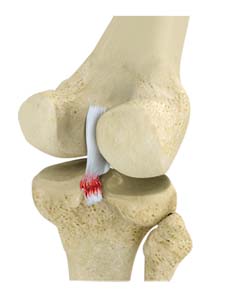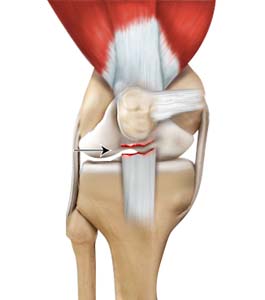Anterior Cruciate Ligament (ACL) Tear/Reconstruction
The Anterior cruciate ligament (ACL) connects the shinbone to the thighbone. It is one of the primary ligaments that stabilizes the knee joint. More than 200,000 ACL injuries occur annually in the U.S., and a majority of patients select surgical reconstruction. ACL tears may be partial or complete and cause the knee to give way during physical activity.
Knee Replacement (Partial and Total Knee Replacement)
Every year in the U.S., almost 700,000 people have a hip or knee replacement. Most are done in people older than 60. But many people have this surgery at a younger age.
Collateral Ligament (MCL / LCL) Tear/Reconstruction
Injury to the LCL and MCL don’t usually occur alone. In the majority of cases, the Anterior Cruciate ligament (ACL) is also involved.
Meniscus Tear/Repair
The meniscus is made of two pieces of wedge-shaped cartilage that function to absorb shock between the thigh and shin bones. It is tough and rubbery and stabilizes the knee. It also plays an important role in protecting and maintaining articular cartilage at the ends of the bones that make up the knee joint.
Multi-Ligament Injuries
Multiligament knee injuries are a challenging and complex problem. A multiligament knee injury is established when at least two of the four major knee ligaments are torn. Multiple ligaments allow for multidirectional movement. Multidirectional instability is a primary symptom of multiligament damage.
Patellar/Knee Cap Instability
The kneecap is called the Patella. It connects thigh muscles to the shinbone. The patella is made of bone and is kept in position by the patellofemoral ligaments. This allows the patella to move freely. When the knee bends and straightens the patella moves straight up and down in a grove in the thighbone. So long as it stays in the groove you can move easily.
Posterior Cruciate Ligament (PCL) Tear/Reconstruction
PCL injuries make up less than 20% of knee ligament injuries. But, only 28% of PCL injuries occur alone. Most PCL injuries occur with other knee injuries including injury to the cartilage, other ligaments, bone, nerves and blood vessels. PCL injuries are common in football, soccer, baseball, and skiing.
Tendon Ruptures (Patella Quad Tendon Hamstring)
Tendons are strong bands of tissue that connect muscles to bones. The patellar, quadriceps and hamstring tendons work together. The patellar tendon attaches the shinbone bone to the kneecap. The quadriceps tendon connects the kneecap to the quadriceps muscles. The hamstring tendon attaches the hamstring muscles to the thigh bone.
Trochleoplasty
A trochleoplasty is an innovative surgical technique to correct trochlea dysplasia. Normally, the groove in which your kneecap resides, the trochlea, has a concave shape and allows your kneecap to glide along a well-defined path. With trochlea dysplasia, the shape is not as well defined and can even be flat or convex.
BEAR® Implant
Dr. Erik Stark is pioneering the use of a breakthrough technology called the BEAR® Implant for treatment of anterior cruciate ligament (ACL) tears, one of the most common knee injuries in the U.S.



